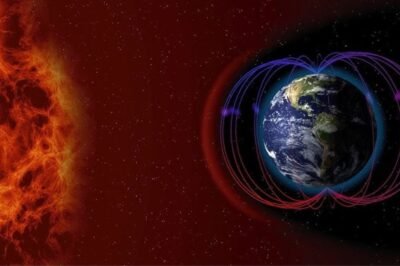Scientists discovered evidence of a major solar storm that hit Earth over 14,000 years ago, known as the “Miyake Event.” Its lingering effects are visible in tree rings. The upcoming publication in Earth and Planetary Science Letters reveals that this ancient storm surpasses any modern recorded solar event, posing a significant risk to current technology if repeated.
Miyake Events are marked by notable spikes in carbon-14 levels in tree rings, a result of the formation of this radioactive isotope from solar interactions with Earth’s atmosphere. Fusa Miyake discovered the first event in 2012, with at least six confirmed since, such as those in 774 CE and 993 CE. The 12,350 BCE Miyake Event stands out for its immense scale and the complexities it presented to researchers.
The carbon-14 spike from the 12,350 BCE Miyake Event in Scots Pine trees along France’s Drouzet River matched beryllium-10 levels in Greenland ice cores, showing the storm’s global impact. Interpreting these signals was challenging due to the Ice Age conditions, unlike other Miyake Events in the stable Holocene epoch.
Researchers Golubenko and Usoskin from the University of Oulu, Finland, used a specialized model to analyze ancient data. They discovered that a storm in 12,350 BCE unleashed a solar particle bombardment 500 times stronger than the largest recorded in 2005. This finding redefines space weather worst-case scenarios and enables the study of older solar storms.
Sources News From Various Digital Platforms, Websites, Journalists, And Agencies.








Leave a Reply